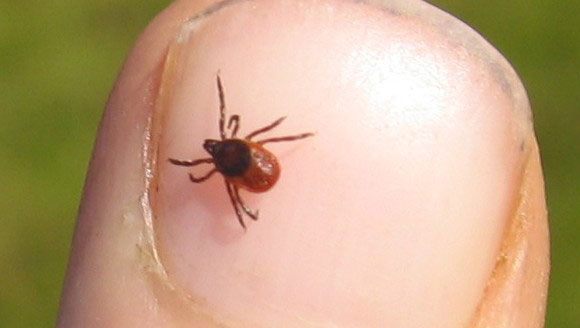 By Twin Cities Lyme Foundation
By Twin Cities Lyme Foundation
Lyme disease is caused by a bacterium spirochete, Borrelia burgdorferi, of which there are 300 strains globally. Humans typically become infected with Lyme after being bitten by a blacklegged tick (deer tick). However, fewer than 50% of people infected with Lyme disease recall being bitten by a tick. The classic sign of an early, localized infection is an outwardly expanding rash called an erythema migrans (bull’s-eye) rash. While the bull’s-eye rash is “classic”, there are many atypical rash variations and the majority of patients with Lyme disease have no recollection of a rash. Rashes may be warm, but are typically painless. Often, in the very early stage of this illness, individuals will also experience flu-like symptoms, including fever, chills, fatigue, and muscle aches. Lyme disease is most easily treated in the very early days of the infection
Untreated Lyme can affect every system in the body
Lyme disease that is not diagnosed and treated early may advance into a much more insidious disease that can be difficult to treat. This is in part due to the inhibitory effect that Borrelia has on the immune system, including B-cells, T-cells, and natural killer cells. Lyme disease that is left untreated or is improperly treated may progress and affect essentially every system in the body, but particularly has an affinity for the central nervous system. Dr. Jonathan Otten, of Minnesota Natural Medicine states, “In my own practice, I have seen hundreds of patients that have been to numerous specialists (neurologists, rheumatologists, cardiologists, infectious disease specialists) due to multi-system involvement of their illness. Often, after obtaining a careful history of all of their symptoms, it becomes clear that Lyme and other tick borne co-infections are at the root of their illness. In this Lyme endemic region, we must always consider tick borne disease”
Co-infections add to clinical complexity
Ticks transmit numerous other pathogens in addition to Borrelia, the organism that causes Lyme disease. Many Lyme patients carry co-infections of Babesia, Bartonella, Ehrlichia, Anaplasma, Mycoplasma, as well as a variety of viruses. Having multiple infections in the context of Lyme adds to the clinical complexity and can contribute to the great variety of case presentations. It truly takes expertise in this field as laboratory tests are unreliable. Treatments for each of these co-infections takes a unique approach as standard treatments for Lyme will not effectively treat each of these organisms.
The unreliable nature of routine serological tests for Lyme disease
One of the most common causes for Lyme being untreated is that too many physicians are of the understanding that the screening Lyme tests are reliable. There are no 100% reliable tests for Lyme disease. The standard ELISA screening test misses 35% of culture-proven Lyme disease and therefore has a sensitivity at best of 65%. Too many patients are being told that Lyme disease is not contributing to their symptoms due to a very poor test!
Lyme is a clinical diagnosis!
The Centers for Disease Control (CDC) surveillance criteria was developed for epidemiological purposes, but was never intended to be diagnostic criteria. No laboratory test can “rule out” Lyme disease. Lyme disease is rather a clinical diagnosis made by a healthcare provider that is Lyme-literate and has clinical experience with this complex illness.